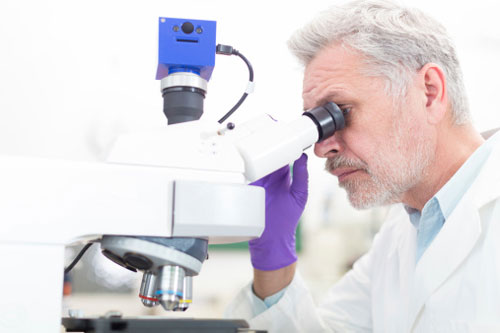 According to new research published in the journal Cancer Cell, scientists have discovered a molecular mechanism that allows tumors to become resistant to chemotherapy. It acts as a backup when a gene called p53, which normally helps healthy cells prevent mutations, is missing. Approximately half of all tumors don’t contain p53.
According to new research published in the journal Cancer Cell, scientists have discovered a molecular mechanism that allows tumors to become resistant to chemotherapy. It acts as a backup when a gene called p53, which normally helps healthy cells prevent mutations, is missing. Approximately half of all tumors don’t contain p53.
The molecular mechanism that acts as a backup system is a pathway called MK2. It allows damaged DNA cells to repair their DNA but does not trigger cell death if the damaged DNA is unrepairable. As a result, cells with damaged DNA continue to divide.
Researchers from the Massachusetts Institute of Technology (MIT) in Cambridge claim an RNA-binding protein known as hnRNPA0 plays a key role in the backup pathway.
“I would argue that this particular RNA-binding protein is really what makes tumor cells resistant to being killed by chemotherapy when p53 is not around,” explains the study’s senior author, Michael Yaffe.
For healthy cells, p53 shuts down cell division to repair damaged DNA. If there is extensive damage, it triggers programmed cell death, also known as apoptosis.
Yaffe and colleagues discovered that when p53 is not present (it’s present in nearly 50% of all tumors) the MK2 pathway takes over. They believe targeting the backup system could make p53-deficient tumors more susceptible to chemotherapy. The team suggests that it may be possible to predict which tumors are likely to benefit from chemotherapy by measuring how active the backup system is.
Yaffe and his team discovered the backup system in 2013. They found that the MK2 pathway doesn’t take over all of p53’s function, only part of it.
“It only rescues the bad parts of p53’s function, but it doesn’t rescue the part of p53’s function that you would want, which is killing the tumor cells,” explains Yaffe.
For the new study, Yaffe and his colleagues took a closer look at the MK2 pathway, which is how they discovered that the RNA-binding protein hnRNPA0 played a key role. Researchers were able to show that the RNA-binding protein hnRNPA0 controls cell division at two checkpoints in the MK2 pathway. In healthy cells, the checkpoints allow cell division to pause for the damaged DNA to be repaired.
One checkpoint, called G2/M, is generally activated by p53. In lung cancer cells that lack p53, hnRNPA0 stabilizes the coding for a backup protein called Gadd45.
For the other checkpoint, called G1/S, when p53 is missing, hnRNPA0 stabilizes the coding for a backup protein called p27. Gadd45 and p27 help cancer cells pause cell division, allowing DNA to be repaired.
Researchers discovered that measuring levels of the mRNA for Gadd45 and p27 could predict which patients are more likely to respond to chemotherapy.
Sources for Today’s Article:
Paddock, C., “New clue about chemo-resistance in tumors could improve cancer treatments,” Medical News Today web site, October 26, 2015; http://www.medicalnewstoday.com/articles/301530.php.
Cannell, I.G., et al., “A Pleiotropic RNA-Binding Protein Controls Distinct Cell Cycle Checkpoints to Drive Resistance of p53-Defective Tumors to Chemotherapy,” Cancer Cell October 22, 2015, doi:10.1016/j.ccell.2015.09.009.
